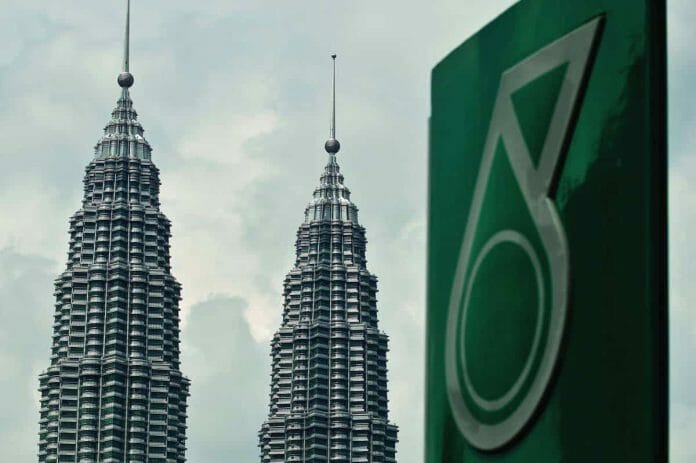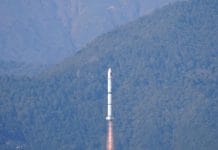A read-through of Petronas’ 1HFY23 results revealed earnings contraction mainly due to normalising prices for crude oil, gas and petrochemicals.
Nevertheless, Petronas’ capex spend remains robust, as evident from the spike in 1HFY23 capex to RM21.4b (+13% YTD), Kenanga Research (Kenanga) said in its Sector Update today (Oct 12).
This translates to the group’s highest 6M capex spend since 1HFY16. YTD spend merely amounts to 28% of the group’s full-year capex guidance of RM60b. Hence, this alludes to bumper spend in 2HFY23, particularly in 4QFY23 due to seasonality. Meanwhile, the 2QCY23 reporting season came in mostly within our forecasts (6 out of 10).
Whilst the recovery in O&G contract order flows was evident for the upstream contractors, it was largely baked into expectations. On the flipside, opex pressure was prevalent amongst these players in tandem with higher demand for manpower and materials within the industry.
Kenanga maintains a NEUTRAL stance on the sector, with top picks being YINSON (OP, TP: RM3.65) and DIALOG (OP, TP: RM3.10).
Hit by lower product prices
Petronas’ 1HFY23 revenue was weaker (-11% YoY) mainly due to: (i) lower average JCC price of USD85/bbl (1HFY22: USD98/bbl), (ii) weaker Brent price of USD80/bbl (1HFY22: USD108/bbl), (iii) weaker average selling prices (ASP) for downstream products that include petrochemicals and refined oil products, (iv) lower production entitlement volumes at the upstream segment, and (v) decreased sales volumes for gross LNG (-2% YTD) and crude oil (-5% YTD).
The above contributed to weaker 1HFY23 core net profit of RM38.8b (-6% YTD), which was also dragged by: (i) higher product costs at the gas segment, and (ii) weaker refining and petrochemical margins in tandem with lower ASPs. Nevertheless, earnings decline was partially cushioned by: (i) stronger USD/MYR rate of 4.46 (1HFY22: 4.27), (ii) lower taxation, and (iii) spike in sales volumes for petroleum products (+29% YTD) and petrochemicals (+34% YTD), Kenanga said.
Highest 1H capex spend since FY16
Petronas’ capex spend in 1HFY23 spiked by 13% YTD to RM21.4b – which translates to the group’s highest 6M capex spend since 1HFY16. YTD spend translated to 28% of the group’s full-year capex guidance of RM60b.
This alludes to bumper spend in 2HFY23, particularly in 4QFY23 due to seasonality. In comparison, capex spend in 1HFY22 and 1HFY21 constituted 23% and 20% of their respective full-year figures.
As such, Kenanga deems 1HFY23 capex spend momentum to be largely in-line with historical trends. In our view, robust 1HFY23 spend is reflective of Petronas’ efforts to ramp up capex to capitalize on current high oil prices.
Furthermore, given energy transition trends, this is the opportune time to monetize fossil fuel resources before its adoption declines.
Evidently, the lion’s share (82%) of 1HFY23 capex spend was allocated for its core hydrocarbons business. Meanwhile, 14% and 4% was apportioned to the new business (which includes clean energy solutions) and net zero carbon emissions segments, respectively.
Meanwhile, the group’s balance sheet (net cash: 0.26x) remains strong in 2QFY23 as evident from its ballooning cash pile of RM218b (2QFY22: RM204b). This will enable the group to comfortably meet its dividend commitments and ramp up capex spend simultaneously.
Correspondingly, Petronas announced that it will pay a total of RM40b dividends to the government this year (2022: RM50b, 2021: RM25b). This translates to an increase of RM5b versus its previous announcement in June where it committed to pay RM35b dividends.
Sustained strong upstream capex momentum
“On the back of resilient oil price and anticipation of a ramp-up in capex by Petronas, we expect sustained traction in O&G contract flows. To recap, Petronas targets to spend RM300b in capex over CY23-27. This translates into substantial annual capex of RM60b vis-à-vis average spend of RM42b p.a. over the past 5 years,” Kenanga added.
Correspondingly, based on Petronas’ Activity Outlook 2023-35, YoY demand will rise in 2023 for most jobs and projects. This includes: (i) fabrication of wellhead platforms, (ii) decommissioning of platforms/subsea trees, (iii) supply of offshore support vessels and jack-up rigs, (iv) topside maintenance, (v) platform maintenance, construction and modification, and (vi) offshore hookup and commissioning.
As such, Kenanga believes that domestic upstream service providers such as UZMA (OP; TP: RM1.05), are leveraged towards a recovery in daily charter rates (DCR), fleet utilization and new contract awards.
Meanwhile, on the international front, IHS Markit expects global offshore exploration and production capex to expand by 12% YoY to USD151b in CY23.
On the same note, the global FPSO market remains upbeat – where Clarksons’ anticipates an all time high award of 11 newbuild FPSOs in 2023 with total value in excess of USD19b. This will be mainly driven by Brazil (five potential orders), Guyana (two contenders), and West Africa (four prospects). Therefore, this bodes well for ARMADA (OP, TP: RM0.60) and YINSON (OP, TP: RM3.65).
Tanker rates tanking out
On the flipside, the outlook appears gloomy for midstream and downstream players. This includes petrochemical and shipping companies such as MISC (MP; TP: RM7.60) and PCHEM (UP; TP: RM6.20).
According to OPEC, the tanker market drifted lower in July with Aframax and Suezmax spot freight rates approaching their lowest YTD levels. This was mainly attributed to diminished activities for these vessels in the Atlantic basin.
In particular, average Aframax spot rates in July (MoM: -19%, YoY: -43%) continued to decline on all routes for the 2nd consecutive month.
Against this backdrop, Kenanga is cautious of sustained weakness in tanker freight rates, particularly in the small-midsized segment. Recall that MISC has a larger fleet of 26 Aframax and Suezmaxes (VLCCs: 10 units).
Furthermore, they believe that OPEC+ will likely maintain its production caps given expectations of soft crude demand from a weak Chinese economy. In turn, this may translate to lower demand for crude transportation.
Petrochemicals languish on weak Chinese demand
Meanwhile, Kenanga believes that demand for petrochemicals will remain weak on the back of: (i) lingering concerns of a hard landing for the US economy, (ii) contagion from China’s property downturn, and (iii) sluggish demand in China, particularly in the automotive sector.
Evidently, Bloomberg reported that Asian polyolefin producers remain cautious on procurement, by maintaining just enough inventories to meet end-user demand.
Furthermore, the global glut in petrochemicals is expected to worsen in 2023 due to: (i) excessive capacity expansion at China, and (ii) inventory destocking. According to Wood Mackenzie, China’s output growth in 2023 will result in domestic surplus of 4.24m tons of ethylene and 8.69m tons of propylene.
On the same subdued note, ASPs for nitrogen fertilizers are expected to decline as supply normalizes following the retreat of natural gas feedstock prices.
2QCY23 results largely in-line
The recently concluded 2QCY23 reporting season came in mostly within Kenanga’s forecasts (6 out of 10). The only company that trumped expectations was UZMA due to lower-than-expected opex at the O&G services segment.
Meanwhile, out of the three companies that disappointed expectations, two of them were dragged by cost pressures emanating from the global inflationary environment. Whilst the recovery in contract order flows was evident for the upstream contractors, it was largely baked into expectations.
On the flipside, opex inflation was prevalent amongst these players in tandem with higher demand for manpower and materials within the industry.
Kenanga maintains a NEUTRAL view on the sector
Kenanga continues to be positive due to: (i) sustained traction in O&G capex spend leads to strong DCRs, fleet utilization and new contract awards for upstream service providers, (ii) the global FPSO market being poised for a huge uptick in the coming years, and (iii) resilient regional tank terminal storage rates exceeding SGD6 per m3.
On the other hand, they believe that demand will remain tepid in the near term for petrochemicals and crude tankers.









